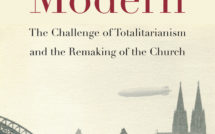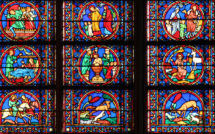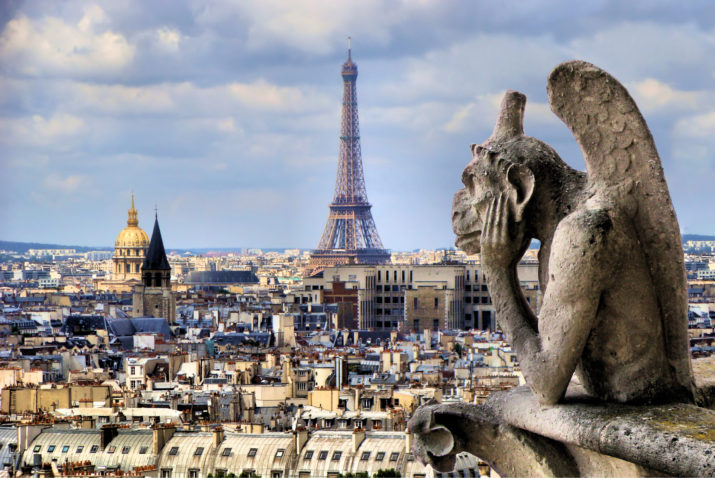
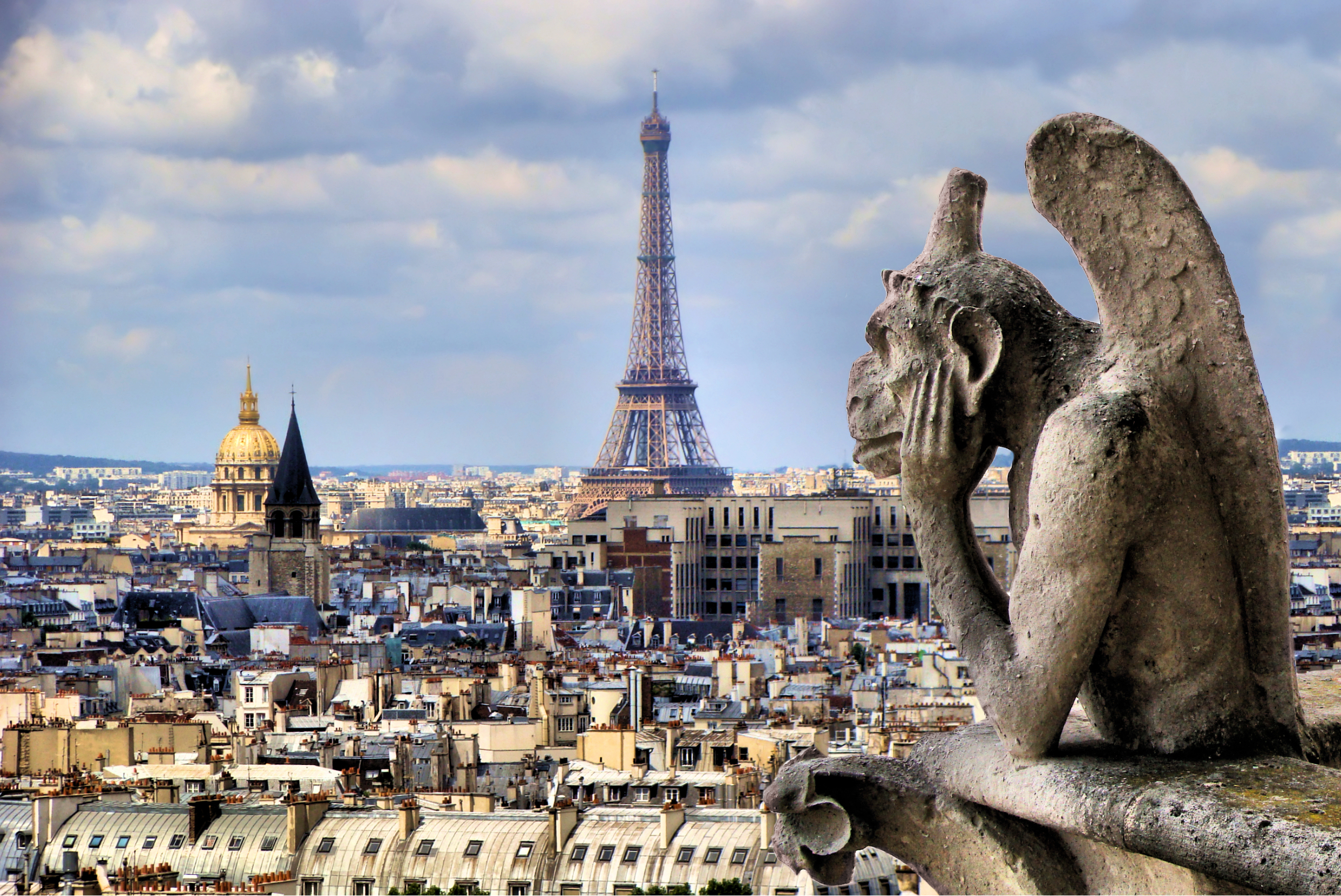
This is part of a roundtable on Notre-Dame de Paris.
Secular France’s Cultural Catholicism and its Muslim Citizens
“[I’m] Muslim and this horrifying news breaks my heart. It’s more than just a religious monument, it’s the history of our country that’s going up in smoke.” When this simple heartfelt post appeared on my Facebook news feed the night of the April 15th Notre-Dame fire, I couldn’t help but think about the powerful implicit French paradoxes in my friend’s quick post. I was immediately unsettled (but not surprised) by my Facebook friend’s need to point out to the world of his Facebook followers that even Muslims could be affected by this national tragedy. My mind jumped to the ethnographic research I had performed in Paris, Lille, and Lyon from 2013-2014 about the sharp boundaries of French national identity and how France’s pious Catholic and Muslim citizens were positioned differently against and within those boundaries. Above all, I thought of the multi-layered complexities of my friend’s identity framing.
Despite having long held the title as “the Eldest Daughter of the [Catholic] Church” (Ravitch 1990, 1), France is well-known for its staunchly secular Republicanism. Self-declared atheists represent 30 percent of the French population, and France is among the top five most atheist countries in the world (Marchand 2015). Since 2004, public school students are not permitted to wear ostensible religious symbols (i.e. headscarves); and, representing a Western European exception, there is no specific curriculum dedicated to learning about religion in French public schools. How could such a secular and atheistic nation collectively mourn a Catholic cathedral to begin with? Furthermore, there is a constant barrage of signals sent by French politicians and ordinary citizens alike suggesting that Muslims area threat to secular French values, that they’re not “integrated” enough, and/or that they will never truly embody francité (aka Frenchness). How could one make sense of my Muslim friend’s attachment tothisnormatively Catholic French national symbol?
Notre-Dame as a secular Catholic heritage site
Since the Notre-Dame fire, much commentary has surrounded the paradoxical relationship between France’s militantly secular reputation and its passionate historical connection to Catholicism and Catholic symbols (Donadio 2019; Erlanger 2019; Zaretsky 2019). It is indeed a curious contradiction, especially if one is not familiar with the long, tumultuous history of the “two Frances”—Catholic France and secular Republican France. As French sociologist Jean-Paul Willaime has noted, “France can be defined either as a Catholic country with a secular culture or a secular country with a Catholic culture” (Willaime 2007, 87). Of course, many would say that this collective mourning of the famous cathedral is simply due to the fact that Notre-Dame is more than just a church. It is the most visited historic monument in Paris, edging out both Sacré-Coeur (yet another secular Catholic symbol) and the Eiffel Tower with more than 12 million visitors in 2017 (MSN 2018) and ranking 15thon the list of the world’s most visited tourist monuments (CBSNews n.d.; Valle 2019).
Moreover, it is a historic, national symbol—“a place emblematic of the history of France, profoundly inscribed in [its] collective imaginary,” (Gignoux, Maurot, and Vaillant 2019). Victor Hugo’s 1831 novel helped to root the Cathedral into France’s collective historical narrative by romanticizing and anthropomorphizing it as sacred space and as a living, breathing, friend to Quasimodo. It was the sanctuary in which General Charles de Gaulle rallied the nation after the 1944 victory march at the conclusion of the Second World War. In a speech just after the April 15thfire, current French President Macron stressed that, “Notre-Dame is our history, our literature, our imaginary. Notre-Dame is the epicenter of our life….This history is ours and she is burning tonight” (Auffray 2019).
Thus, the place and space for this Notre-Dame in the French national imaginary may appear rather unsurprising—even despite the paradox it might present against secular Republican expectations. Notre-Dame is more than a site for religious gathering and prayer; it represents both a sacred religious space that has been secularized and a secular Republican space that has been sacralized—it is a poignant symbol of the cultural Catholicism that undergirds francité, even as France represents one of the world’s most secular and atheistic nations. But it’s not just Notre-Dame that has the ability to straddle the Catholic-secular paradox embedded in francité and which has emerged out of the historical struggle between the “two Frances.” Rather, it is cultural French Catholicism itself.
The Catholic-ness of France
The Catholic Church in France has experienced a number of changes over the past five decades or so—not least of which is its shift toward becoming a minority religion despite its normative status in French society. An 1871 survey of religious statistics in France showed that 98 percent of the population declared themselves Catholic and only 0.23 percent agnostic (Ognier 2008, 45). At the end of the1950s, more than 80 percent of French citizens still recognized themselves as Catholic, and about 25 percent attended Church every Sunday. Today, about 60 percent or more of French citizens still identify as “Catholic” in most surveys, but only 15 percent of French citizens say they are “practicing” Catholics; only approximately 4.5 percent attend mass each week (Portier 2012, 22; citing IFOP 2006, 14–15); only 1.8 percent practice daily (Hoffner and Vaillant 2017).
In light of these statistics, some scholars have gone so far as to say that atheism, rather than Catholicism, has actually become a pillar of French identity (Netter and Pouthier 2016 quoting Sebastian Roché). Nonetheless, other scholars, myself included, argue that cultural Catholicism remains a crucial pillar of francité; it is the spiritual dimension of the French national imaginary and a normative expression of French national identity (Barroche 2016; Chadwick 2000; Ferrara 2019; Hervieu-Léger 2006; Ravitch 1990; Willaime 1985, 2012; Williams 2010). Although attending weekly mass goes above and beyond the norms of mainstream French Catholic practice, church attendance for funerals, weddings, and baptisms remain commonplace and normal. Crosses, church bells, fish on Friday in school cafeterias, as well as public church processions and public concerts for Catholic schools are normative, acceptable, even mundane expressions of religion in France, and in many ways, symbolically represent francité. This is especially the case when compared with Islam: crescents, the adhan (Islamic call to prayer), halal food in the cafeteria, as well as public displays of Muslim prayer set off alarms of illegality, Otherness, non-normativity, and above all, non-Frenchness. While the culturally-Catholic normativity of francité may seem rather expected and innocuous to the ordinary French citizen, I suggest that it nonetheless contributes to the perpetuation of social hierarchies that prevent Muslims, and members of other minorities as well, from being considered equally representative of what it means to be French.
What Bible? Cultural Catholicism as national identity
As historian Darcie Fontaine also points out in her essay in this EuropeNow roundtable, it is not necessarily religious attachments, but the cultural manifestations and attachments to French Catholicism that have remained the most powerful, and even reinvigorated in recent years—much to the chagrin of Church clergy and practicing Catholics.[1] The majority of the French population still identifies in some way as Catholic, but markedly, 31 percent of those who identify as Catholic say that they do not personally believe in God (Dabi and IFOP 2011). Therefore, it’s not necessarily the Catholic religion that’s sewn into francité—with the Christian mores touted by the Church, welcoming and providing shelter to Others, immigrants, the poor and the downtrodden. Rather, it’s a highly romanticized, nostalgic, imagined vision of what Catholicism was once perceived as providing for the French nation—unity, a common culture, moral and social uniformity, and above all, a coherent national identity. So, when Notre-Dame was burning, it wasn’t a religiously Catholic symbol that was being mourned, but a nostalgic symbol of an idealized culturally Catholic French nation, imagined as having once been more united than many of its citizens feel at this moment.
The rallying cries of France being a historically and culturally Catholic country made numerous headlines in the long lead-up to the 2017 presidential elections beginning in 2012. There has even been a somewhat curious alliance born out of this sentiment between cultural Catholicism and populism—notably in the interest of reinstating Christian values in France (see further Bherer 2019). Right wing movements have capitalized on this cultural Catholic surge to garner more support and popularity amidst a social climate anxious with looming questions of terrorist threats, immigration, national identity, and national unity (Goar 2017; Werly 2017; see also Fontaine in this roundtable). In 2017, Marine Le Pen secured nearly 35 percent of the overall vote in the second round, and 38 percent of the Catholic vote—an unprecedented feat in the half-century history of the Front National political party (National Front; Delafoi 2017, 2017; Le Monde2017). The Catholic vote has always been toward the right, despite certain high tides of cathos de gauches (left-leaning Catholics) such as Mitterand in 1981, but it has rarely been as far-right as in the 2012 and 2017 elections (Tincq 2013; Duhamel 2017).
It is important to point out that it tends not to be “regularly practicing” Catholics who vote far-right, rather it is more so those who self-ascribe as “occasionally practicing” or “non-practicing” cultural Catholics; those who might recite the Lord’s Prayer once a year during Christmas, Easter, or a family funeral, if at all (Gorce 2017; Mounier 2017).[2]The most recent European elections serve as a poignant example of this divide. The Rassemblement National (RN)—France’s far-right nationalist party led by Marine Le Pen—was at the top of the list for all Catholic voters (regardless of practice) at 28 percent. But looking further into the voter breakdown, the far-right RN was at the top of the list at 30 percent for “non-practicing” Catholic voters, but further down on the “practicing” Catholics’ list at only 14 percent. Macron’s centrist La République en Marche party was at the top of the list for “regularly practicing” Catholic voters at 43 percent (Gorce 2019; Fourquet, Dubrulle, and IFOP 2019). In other words, religious piety and practice tend to act as sources of moderation among French Catholic voters, while asserting a strong Catholic identity without regular practice renders Catholics more likely to vote to the far-right.
French identity and its Catholic-ness has, in many ways, been reified specifically against France’s Muslims in recent years—underlining for far-right nationalism why and how France and Islam are seemingly somehow incompatible; a clash of cultures, a clash of civilizations (Huntington 1993). Just as there needs to be a “them” to define an “us,” Islam and the various “Muslim cultures” that it brings with it have been used to define everything that France’s romanticized cultural Catholicism is not. As such, cultural Catholicism has appropriated French Catholicism in a way that undermines both the French Catholic Church’s efforts toward improved social outreach, as well as the numerous interfaith initiatives that strive to bring France’s various pious communities together by way of their shared ethical commitments. Since cultural Catholicism straddles the Catholic-secular French Republican divide, defying both sides as it does so, it also serves as a gate-keeper for francité. Thus, pitting Islam and French Muslims against cultural Catholicism ends up Othering Muslims entirely from both the “religious” and the secular dimensions of French national identity.
France’s Muslims and French Catholic heritage
For approximately a century, Islam has been France’s “second” religion after Catholicism. Today, France is home to about 5 million Muslims, making the Muslim minority approximately 8 percent of its population (Laurence 2012, 2; Simon and Tiberj 2013). One of the most popular claims against Muslims is that, simply because they are more likely to actually practice their religion than their Catholic counterparts, they’ve somehow failed to embrace the norms of laïcité (French secularism). This is despite numerous studies and examples to the contrary. Many studies show Muslims playing by all the secular Republican rules, perhaps even more so than their non-Muslim co-citizens (Bowen 2010; Fernando 2010, 2014; Ferrara 2017, 2019; Fredette 2014). Large national Muslim organizations have been around since at least the 1980s, working to demonstrate the compatibility of Islam with French ethics and values; there are numerous interfaith organizations that work to highlight similarities between Catholicism and Islam; and there are numerous secular Muslim institutions working to combat racism and other forms of discrimination within broader French society. Nonetheless, the country’s Muslims have long struggled to be accepted as full co-citizens and as worthy of bearing French national identity.
A 2013 survey conducted by global market research group Ipsos for the French newspaper Le Monde found that more than half of the French public thought that Islam was incompatible with “French” values (Le Bars 2013). Nearly three-quarters of respondents said that Islam sought to impose its mode de fonctionnement (way of operating) upon French society; more than half thought that “most” or “part” of the Muslim population were intégristes (connotes fundamentalists, usually in a pejorative, extremist sense); and 46 percent felt that Islam is rooted in violence and intolerance (Le Bars 2013). In each subsequent social survey in France since the turn of the twenty-first century, Islam and Muslims have been seen in an increasingly negative light (Le Bars 2013).
During my research among French Muslim and Catholic citizens, many young Muslims lamented feeling like their French co-citizens didn’t see them as equal representatives of France. One young woman told me, “I was born in France, I grew up in France, and I’ve lived my whole life here up to this moment. However, I’ve always been made to feel as though I’m not une vraie française [(a real French)] because I have Algerian origins and I’m Muslim.” My interlocutors would often use “us and them” language when speaking about Muslims and non-Muslims in France, saying things like “French people don’t like us,” despite the French national identity cards in their pockets and their eagerness to fit in as French. This is not an example of “failed integration.” It is representative of the internalization of the extant structural barriers for Muslims within French national identity that inhibit Islam from becoming part of the French national imaginary. Notably, many French Muslims simply feel written out of French national identity – or written over in the process of trying to embody it. As one French Muslim youth told me, “Honestly, in this moment, being French means forgetting one’s self. We forget ourselves. France has always taught me to forget myself, to be different than I am.”
The two Frances and francité…and Islam
So where do Islam and Muslims fit into the Catholic-secular Republican narrative of francité? Since at least the French Revolution, these two Frances have been engaged in an agonistic dialogue—even as France has moved well beyond this original dichotomy into an era of deep ethical plurality. The friction between these two factions has not only shaped French Catholicism and French secularism, but has helped create the content of the French national imaginary and the boundaries of French identity. This friction has fomented the contradictions inherent in contemporary France between freedom of religion and the restrictions of religious expression; between individual liberty and the pressures of Franco-conformity (Keaton 2016); between color-blind universal equality and evidenced discrimination toward particular differences (Adida, Laitin, and Valfort 2010, 2014; Geisser 2003; Hajjat and Mohammed 2013); between embracing fierce humanist secularism and collectively mourning Catholic symbols. This rootedness of Catholicism in French national identity means that French Catholics are necessarily positioned differently within the boundaries of francité than their Muslim (and other religious minority) co-citizens who often end up measured against these boundaries.
For ordinary French Catholics, and even for practicing French Catholics, the contradictions of francité are rather banal and don’t necessarily affect daily life. This facility can be attributed to the bridge of cultural Catholicism that allows for the straddling of the two sides. One can send their child to one of France’s 9,000+ private Catholic schools subsidized by the state, expecting them to receive a secular French education, a boost in social mobility, and depending on the school and if they so choose, they might be able to sign up for one hour of catechism per week as an add-on to the otherwise thoroughly secular national education curriculum. French Catholics can follow the church bells on Sunday, or only on Easter and Christmas, or only when someone marries or passes away, or never. None of these choices raise eyebrows. Even the large-scale public Catholic parades and prayers held each year by the Traditionalist Catholics (who split with Rome after Vatican II) in the streets of central Paris to commemorate the Assumption of Mary don’t raise concern. And importantly, skin color and ethnicity are unlikely to be a problem, and if they are, a flash of Catholic affiliation may even soften the stares. Yes, there are fierce contradictions herein, but they’re all historically and culturally French contradictions, and thus are accepted as normal, unsurprising, and ordinary.
By contrast, for ordinary French Muslims—practicing or not—these contradictions in francité necessarily play out differently. As Islam is underlined as the contradiction of, if not a threat to French cultural Catholicism, there is no simple bridge to either the Catholic religious or secular Republican claims to French national identity. One can send their child to a Catholic school or a public school for a normative secular French education. Some Catholic schools in France have up to an 80 percent Muslim student body due to the lack of private Muslim school alternatives (Bennhold 2008). If Muslims choose to send their children to one of France’s 100+ small private Muslim schools—essentially the equivalent of a private Catholic school education but cloaked in Islamic rather than Catholic values and without decades of experience—it will likely not yet be subsidized by the state,[3]upward mobility is not yet a given, and such schools are often viewed with suspicion by politicians and society writ-large. French Muslims likely can’t follow the call to prayer to the mosque unless it’s from their mobile phones, since few mosques have asked for and received authorization to broadcast the call to prayer via loudspeakers. Furthermore, individual choices concerning frequency of mosque attendance are much more likely to be scrutinized by onlookers and fellow co-citizens. And of course, in contrast with the August 15thCatholic prayer processions, prayer in the streets outside of overflowing mosques was made illegal in certain parts of France in 2017 (Kovacs 2017). The French contradictions between the embrace of Catholic norms and the defense of humanist secularism end up forging a national imaginary that can’t quite find an appropriate place and space for Islam—at least, not an internal one—rendering it, its symbols, and its adherents not-quite-French.
Of course, progress is being made to some degree. Fewer people are now asking “Can Islam be French?” (Bowen 2010)and more are asking, “How can France learn to accept this part of itself?” Nonetheless, Islam continues to be understood more so as an external threat rather than a part of French culture and identity. Cultural Catholicism remains too dominant within francité and, at least from the perspective of the ordinary onlooker, it doesn’t act like Islam, look like Islam, or have the same symbolic totems for French identity, leaving Islam marked as Other both against Catholicism and against secular Republicanism. So as Muslims vie to be recognized as French, they must either accept exclusion in maintaining their Muslim heritage; erase their particular Muslim identities and attachments by way of full assimilation; or, in the case of my Facebook friend, accept the social hierarchy, continue to strive toward carving out a space for Islam within the French national imaginary, and remind everyone that even French Muslims can mourn the burning of a symbol of French national identity such as Notre-Dame.
Carol Ferrara is the 2019-2020 Fulbright-EHESS Postdoctoral Awardee in Social Sciences. She is currently undertaking a new ethnographic research project about independent private Muslim and Catholic schooling in France. Carol was also a 2017-2018 Mellon-CES Dissertation Completion Fellow. Her dissertation provides a comparative ethnographic analysis of how pious Muslims and Catholics interpret and frame questions of national identity and pluralist ethics in France. Most recently, she was an Affiliated Faculty member of anthropology and religion at Emerson College. Carol holds a PhD in Sociocultural Anthropology from Boston University and a dual MA in Middle East & Islamic Studies and International Affairs from the American University in Paris.
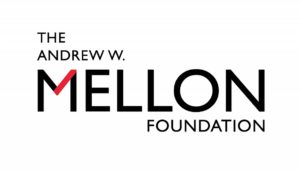 This research article is sponsored by the Mellon-CES Dissertation Completion Fellowship, funded by the Andrew W. Mellon Foundation and awarded in collaboration by the Council for European Studies (CES) at Columbia University. These articles are a distillation of the writer’s dissertation project.
This research article is sponsored by the Mellon-CES Dissertation Completion Fellowship, funded by the Andrew W. Mellon Foundation and awarded in collaboration by the Council for European Studies (CES) at Columbia University. These articles are a distillation of the writer’s dissertation project.
References:
Adida, Claire, David Laitin, and Marie-Anne Valfort. 2010. “Les Français musulmans sont-ils discriminés dans leur propre pays? Une étude expérimentale sur le marché du travail.” Sciences Po.http://marieannevalfort.com/wp-content/uploads/2017/05/FrenchAmericanFoundation2010_VALFORT.pdf.
———. 2014. “Muslims in France: Identifying a Discriminatory Equilibrium.” Journal of Population Economics27 (4): 1039–86.
Auffray, Alain. 2019. “Devant Notre-Dame dévastée, Macron appelle à rebâtir ensemble.” Libération.fr, April 16, 2019. https://www.liberation.fr/france/2019/04/16/devant-notre-dame-devastee-macron-appelle-a-rebatir-ensemble_1721608.
Barroche, Julien. 2016. “The Catholic Unconscious of the Republican State.” Mil neuf cent. Revue d’histoire intellectuelle34 (1): 57.
Bennhold, Katrin. 2008. “For French Muslims, a Catholic Education.” The New York Times, September 25, 2008, sec. Europe. https://www.nytimes.com/2008/09/25/world/europe/25iht-schools.4.16488061.html.
Bherer, Marc-Olivier. 2019. “Olivier Roy : Il est évident que l’Eglise a un problème de crédibilité,” Le Monde, April 24, 2019. https://www.lemonde.fr/idees/article/2019/04/24/olivier-roy-l-eglise-a-un-probleme-de-credibilite_5454056_3232.html.
Bowen, John R. 2010. Can Islam Be French?: Pluralism and Pragmatism in a Secularist State: Pluralism and Pragmatism in a Secularist State. Princeton, NJ: Princeton University Press.
CBSNews. n.d. “The World’s Most Popular Tourist Attractions.” Accessed April 27, 2019. https://www.cbsnews.com/pictures/worlds-most-popular-tourist-attractions-landmarks/.
Chadwick, Kay. 2000. Catholicism, Politics and Society in Twentieth-Century France.Liverpool University Press.
Dabi, Frédéric, and IFOP. 2011. “Les Français et la croyance religieuse.” IFOP. https://www.ifop.com/publication/les-francais-et-la-croyance-religieuse/ April 27, 2011.
Delafoi, Florian. 2017. “FRONT NATIONAL (1971-2017).” Le Temps, May 1, 2017. https://www.letemps.ch/monde/front-national-19712017.
Donadio, Rachel. 2019. “Notre-Dame: The Cathedral That Embodies Secular France.” The Atlantic, April 16, 2019. https://www.theatlantic.com/international/archive/2019/04/notre-dame-cathedral-secular-france/587305/.
Duhamel, Alain. 2017. “Les catholiques dans la bataille présidentielle.” Libération.fr, January 11, 2017. http://www.liberation.fr/debats/2017/01/11/les-catholiques-dans-la-bataille-presidentielle_1540688.
Erlanger, Steven. 2019. “What the Notre-Dame Fire Reveals About the Soul of France.” The New York Times, April 17, 2019, sec. World. https://www.nytimes.com/2019/04/16/world/europe/france-notre-dame-religion.html.
Fernando, Mayanthi L. 2010. “Reconfiguring Freedom: Muslim Piety and the Limits of Secular Law and Public Discourse in France.” American Ethnologist37 (1): 19–35.
———. 2014.The Republic Unsettled : Muslim French and the Contradictions of Secularism. Durham: Duke University Press.
Ferrara, Carol. 2017. “Transmitting Faith in the Republic: Muslim Schooling in Modern Plural France.” Religious Education, no. 2: 1–14.
———. 2019. “Pious Citizens of the Republic: Muslim and Catholic Negotiations of National Identity and Ethical Plurality in Contemporary France.” https://open.bu.edu/handle/2144/34898.
Fourquet, Jérôme, and IFOP. 2017. “Le vote des électorats confessionnels au second tour de l’élection présidentielle.” IFOP. https://www.ifop.com/publication/le-vote-des-electorats-confessionnels-au-second-tour-de-lelection-presidentielle/.
Fourquet, Jérôme, Jean-Philippe Dubrulle, and IFOP. 2019. “Le vote des électorats confessionnels aux élections européennes.” IFOP. https://www.ifop.com/publication/le-vote-des-electorats-confessionnels-aux-elections-europeennes/.
Fredette, Jennifer. 2014. Constructing Muslims in France: Discourse, Public Identity, and the Politics of Citizenship. Temple University Press.
Geisser, Vincent. 2003. La nouvelle islamophobie. Paris: La Découverte.
Gignoux, Sabine, Élodie Maurot, and Gauthier Vaillant. 2019. “Notre-Dame de Paris, une cathédrale et bien plus encore…,” La Croix, April 16, 2019. https://www.la-croix.com/Religion/Catholicisme/France/Notre-Dame-Paris-cathedrale-bien-encore-2019-04-16-1201016115.
Goar, Matthieu and Alexandre Lemarié. 2017. “François Fillon courtise l’électorat catholique dans la dernière ligne droite.” Le Monde, April 14, 2017, sec. Politique. https://www.lemonde.fr/election-presidentielle-2017/article/2017/04/14/francois-fillon-courtise-l-electorat-catholique-dans-la-derniere-ligne-droite_5111093_4854003.html.
Gorce, Bernard. 2017. “Présidentielle, l’ancrage à droite des catholiques pratiquants confirmé.” La Croix, April 24, 2017, sec. Religion. http://www.la-croix.com/Religion/Catholicisme/Presidentielle-lancrage-droite-catholiques-pratiquants-confirme-2017-04-24-1200842060.
———. 2019. “Européennes 2019, les catholiques pratiquants ont largement rallié Macron.” La Croix,May 27, 2019, sec. Religion. https://www.la-croix.com/France/Sondage-resultats-Europeennes-2019-catholiques-pratiquants-massivement-rallie-Macron-2019-05-27-1201024883.
Hajjat, Abdellali, and Marwan Mohammed. 2013. Islamophobie. Paris: La Découverte.
Hervieu-Léger, Danièle. 2006. Religion as a Chain of Memory. Cambridge: Polity Press.
Hoffner, Anne-Bénédicte, and Gauthier Vaillant. 2017. “Qui sont vraiment les catholiques de France.” La Croix, January 11, 2017, sec. Religion. https://www.la-croix.com/Religion/France/Qui-sont-vraiment-catholiques-France-2017-01-11-1200816414.
Huntington, Samuel P. 1993. “The Clash of Civilizations?.” Foreign Affairs (New York, N.Y.), 22–49.
IFOP. 2006. “Le Catholicisme en France.” La Croix, 2006.
Kovacs, Stéphane. 2017. “Les prières de rue interdites à Clichy.” Le Figaro, November 16, 2017. http://www.lefigaro.fr/actualite-france/2017/11/16/01016-20171116ARTFIG00306-les-prieres-de-rue-interdites-dans-les-hauts-de-seine.php.
Laurence, Jonathan. 2012. The Emancipation of Europe’s Muslims: The State’s Role in Minority Integration. Princeton University Press.
Le Bars, Stéphanie. 2013. “La religion musulmane fait l’objet d’un profond rejet de la part des Français.” Le Monde, January 24, 2013, sec. Société. https://www.lemonde.fr/societe/article/2013/01/24/la-religion-musulmane-fait-l-objet-d-un-profond-rejet-de-la-part-des-francais_1821698_3224.html.
Le Monde. 2017. “Les résultats en graphes du second tour de l’élection présidentielle 2017.” Le Monde, May 7, 2017. https://www.lemonde.fr/les-decodeurs/article/2017/05/07/les-resultats-du-second-tour-de-l-election-presidentielle-2017_5123789_4355770.html.
Marchand, Leila. 2015. “Plus de la moitié des Français ne se réclament d’aucune religion,” Le Monde May 7, 2015. https://www.lemonde.fr/les-decodeurs/article/2015/05/07/une-grande-majorite-de-francais-ne-se-reclament-d-aucune-religion_4629612_4355770.html.
Mounier, Frédéric. 2017. “Jérôme Fourquet : Un réveil identitaire du vote catholique.” La Croix, May 11, 2017, sec. Religion. https://www.la-croix.com/Religion/Catholicisme/France/Jerome-Fourquet-reveil-identitaire-vote-catholique-2017-05-11-1200846423
MSN. 2018. “Notre-Dame Is Still Paris’s Most-Visited Monument.” MSN. June 15, 2018. https://www.msn.com/en-sg/travel/news/notre-dame-is-still-pariss-most-visited-monument/ar-AAyFPH5.
Netter, Marie-Laurence, and Jean-Luc Pouthier. 2016. “The Impossible Rise of a Republican Civil Religion.” Mil neuf cent. Revue d’histoire intellectuelle34 (1): 149.
Ognier, Pierre. 2008. Une école sans Dieu?: 1880-1895 : l’invention d’une morale laïque sous la III ͤ. République. Toulouse: Presses Universitaires du Mirail.
Portier, Philippe. 2012. “Pluralité et unité dans le catholicisme français.” In Catholicisme en tensions, edited by Céline Béraud, Frédéric Gugelot, and Isabelle Saint-Martin, 19–36. Paris: Editions de l’École des hautes études en sciences sociales.
Ravitch, Norman. 1990. The Catholic Church and the French Nation 1589-1989. London; New York: Routledge.
Simon, Patrick, and Vincent Tiberj. 2013. Sécularisation ou regain religieux : la religiosité des immigrés et de leurs descendants. Paris: Institut national d’études démographiques.
Tincq, Henri. 2013. “L’Eglise, une famille éclatée par l’après-mariage pour tous.” Slate.fr, May 29, 2013. http://www.slate.fr/story/73153/eglise-famille-eclatee-par-mariage-pour-tous.
Valle, Gaby Del. 2019. “Notre Dame Is One of Paris’s Most Visited Landmarks. Here’s What the Fire Could Mean for the City.” Vox, April 16, 2019. https://www.vox.com/the-goods/2019/4/16/18410667/notre-dame-fire-paris-tourism.
Werly, Richard. 2017. “Entre Le Pen et Macron, le vote crucial des catholiques.” Le Temps, May 1, 2017. https://www.letemps.ch/monde/entre-pen-macron-vote-crucial-catholiques.
Willaime, Jean-Paul. 1985. “La religion civile à la française.” Autres Temps. Les cahiers du christianisme social6 (1): 10–32.
———. 2007. “Teaching Religious Issues in French Public Schools: From Abstentionist Laïcité to a Return of Religion to Public Education.” In Religion and Education in Europe: Developments, Contexts and Debates, edited by Robert Jackson, 87–101. Münster: Waxmann.
———. 2012. “Conclusion.” In Catholicisme(s) en tensions: lignes de forces, interrogations et changements, edited by Céline Béraud, Frédéric Gugelot, and Isabelle Saint-Martin, 309–13. Paris: Ecole des hautes études en sciences sociales.
Williams, Kevin. 2010. “The Common School and the Catholic School: A Response to the Work of T.H. McLaughlin.” International Studies in Catholic Education2 (1): 19–36.
Zaretsky, Robert. 2019. “Notre Dame Tells a Story of Quarreling, Not Unity. That’s Why It Unites the French.” The Washington Post, April 16, 2019. https://www.washingtonpost.com/opinions/global-opinions/notre-dame-tells-a-complex-story-of-french-identity/2019/04/16/df87d322-6052-11e9-9ff2-abc984dc9eec_story.html?utm_term=.d70363390423.
[1]See Darcie Fontaine’s essay, “The Mobilization of Identity around Notre-Dame de Paris and the danger of Christian Nationalism” in this 2019 EuropeNowroundtable on Notre-Dame.
[2]The highest rate of votes for far-right FNamong Catholics in the 2017 elections was among “occasionally practicing” Catholics at 46 percent. This is compared to only 29 percent of regularly practicing” Catholics who voted FN(Fourquet and IFOP 2017).
[3]There are currently only about five private Muslim schools subsidized by the state, and not all of these are fully subsidized. This is partly a question of demand, and partly a question of local politics (see further Ferrara 2017).
Photo: Famous Notre Dame gargoyle overlooking the Paris cityscape with Eiffel Tower | Shutterstock
Published on October 2, 2019.

